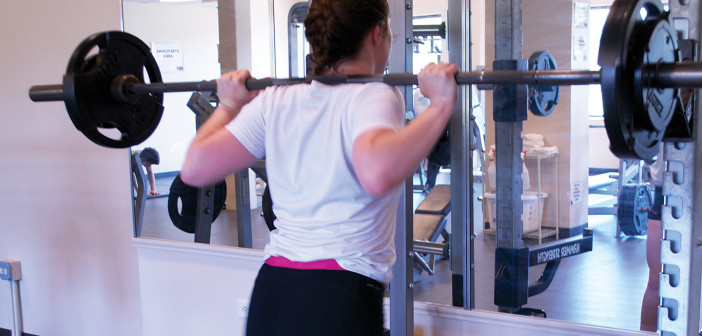“It can kill you,” Greg Glassman, creator of CrossFit, told the New York Times in an interview from 2005.
Glassman, along with ex-wife Laura Jenai, created CrossFit, Inc. in 2000 in Santa Cruz, Calif. CrossFit is strength and conditioning training that revolves around high-intensity workouts that incorporate plyometrics, powerlifting, gymnastics, weightlifting and interval training techniques.
Since then, CrossFit has taken off, landing in 10,996 affiliated gyms—and growing.
“Our gym has seen amazing growth over the last 15 months,” says Nate Steele, owner and lead trainer at CrossFit 630 in Naperville, Ill.
Neil Khant, head trainer at CrossFit Naperville, agrees.
“Anyone can do CrossFit,” Khant explains. “It’s a good full body workout with short, high-intensity movements. It’s scalable to anyone, any age.”
“It’s different than more traditional workouts in that we work from the core, out,” Khant continues. “We focus on full body movement, not just target areas, like many people do at regular gyms.”
“We provide a level of service that you won’t get at a bigger box gym,” Steele says of the contrast from traditional workout facilities.
“Members aren’t lost and don’t know what to do. They don’t get frustrated and give up because they aren’t trained to design programs for themselves. CrossFit 630 offers personal approach.”
Still, with the hype CrossFit has gained over recent years, many remain skeptical about how healthy it actually is for one’s body.
“I know there has been some debate about how healthy it is, because I think that it can be pretty hard on your body,” says Hannah Schuppner, who remains loyal to her cardio and yoga workouts.
“The main mantra of Crossfit is to deplete, endure and repeat,” says Ross Edgley, writer for publications such as Men’s Health and Men’s Fitness. “The only problem is this type of balls-out, constant high-intensity, heavy load training puts a lot of stress on the body and can lead to overtraining.”
In April 2014, Orthopedic Journal of Sports Medicine published an article that studied “Injury Rate and Patterns Among CrossFit Athletes.” The study found that the most common CrossFit injuries among 386 responses with 84 reported injuries occurred in the shoulder, lower back and knee. The majority of injuries were caused by intense power lifting and gymnastic techniques incorporated in the workouts. The participants also reported that they had no prior history of injury or discomfort in the injured areas. The majority of injuries were mild, with inflammation or strains.
The study concluded that more male athletes injured themselves than female athletes, correlating with their finding that more females were willing to seek help from trainers than males.
The study found that “increased supervision by CrossFit coaches was directly related to injury rate. Often, workouts are posted with prescribed weight and repetition scheme, which can prove to be excessive for even more experienced members.” Although each CrossFit gym owner must have a CrossFit Level 1 certification, more attention on clients is necessary in order to prevent injury and ensure proper training.
Another medical harm that comes with the intensity of CrossFit is rhabdomyolysis, “a breakdown of muscle cell contents that results in the release of muscle fiber contents into the bloodstream,” says Eugene Allen, owner of CrossFit Pierce County in Tacoma, Wash.
Allen describes the medical condition as “muscle contractions” in which “muscles attempt to shorten while they are being stretched.”
The resistence and onset of rhabdomyolysis leads to painful swelling, and the introduction of myoglobin, causing damage to kidney cells.
“To date we have seen five cases of exertional rhabdo associated with CrossFit workouts,” says Greg Glassman in an article titled ‘CrossFit-Induced Rhabdo.’ “Each case resulted in the hospitalization of the afflicted. The longest hospital stay was six days, the shortest two days.”
Still, with increased injury rates and more intense workouts, many CrossFit athletes revel in the challenges.
“It’s a fun, challenging, rewarding, community building way of working out,” says David Muenster, CrossFit athlete and personal trainer who focuses on speed and agility training for kids and high school athletes.
“CrossFit and traditional workouts are both great,” Muenster says. “It depends on what your goals are and what will best work towards those goals. As long as you are being coached, taught and understand both types of workouts, then do what you wish because both will give you results if done right.”
Photo by Kelly Echeverri

